Hiring teams wouldn’t need a language analytics platform if job descriptions were easy to write. They’re not.
We know this because of the original research we do into how candidates react to different words, phrases, sentiments, and content in job descriptions. It’s the same research that determines every piece of guidance in Datapeople’s language analytics platform.
A language analytics platform helps writers with helpful real-time suggestions during the writing process. The suggestions can include tips on content, language, grammar, and punctuation.
We’ve organized our recruiting process guidance into five buckets. (If you’re a longtime user, you may remember that we had seven buckets before. We’ve condensed them into five for clarity.) Here’s an overview of our yellow, red, blue, gray, and green highlights.
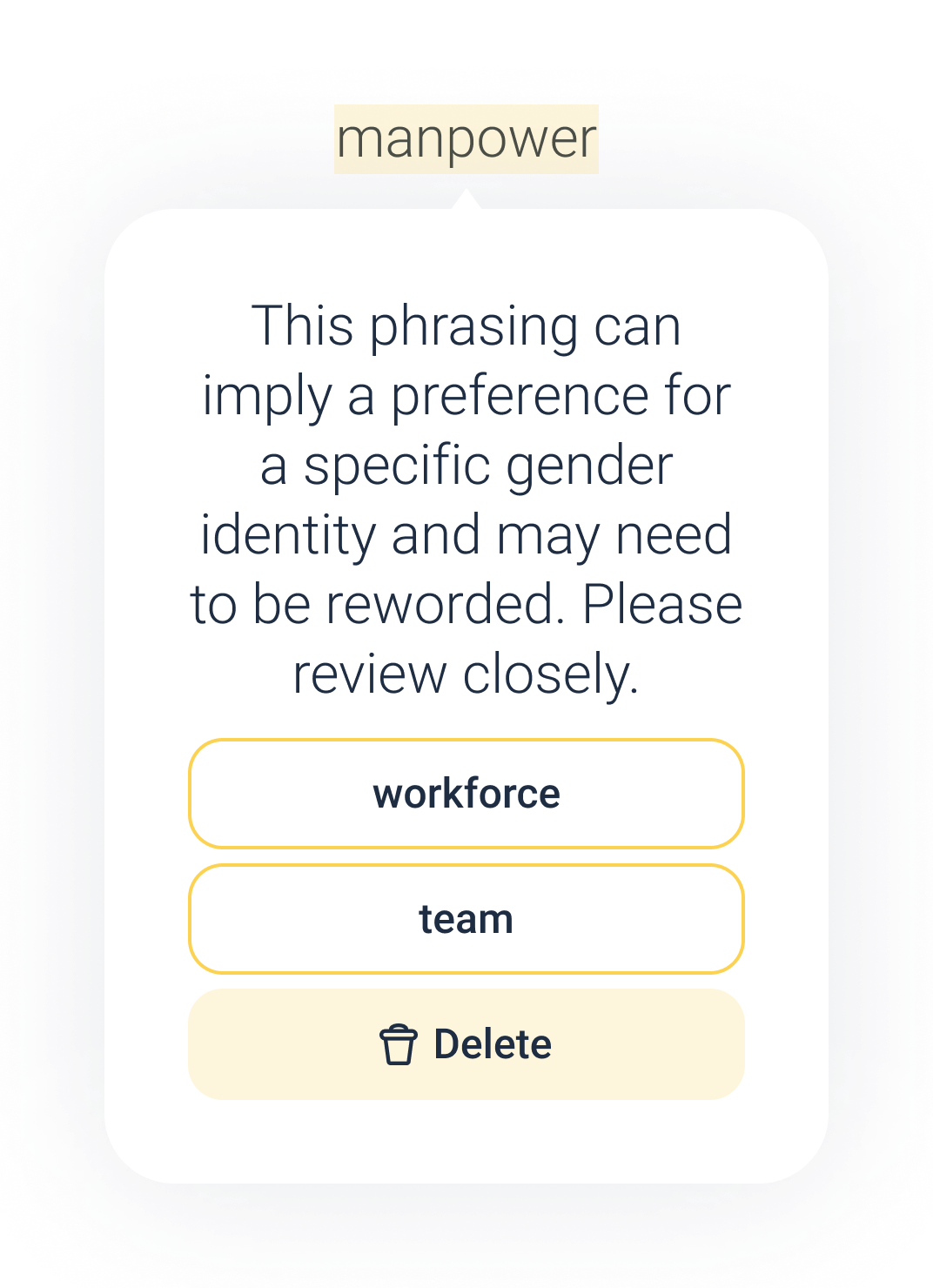
Yellow = Review potentially biased language
Humans have positive or negative feelings about almost everything. Those biases arise from our natural inclinations and an entire life of experiences. They exist mostly on the unconscious level, but they can and do influence our actions.
The yellow highlights in our language analytics platform bring attention to language that may convey unconscious bias and which you should review critically. The last thing you want is to inadvertently tell a group of candidates that they’re not welcome to apply.
Datapeople’s yellow highlights currently address eight forms of bias. They include racism, tokenism, ableism, ageism, sexism, nationalism, religious bias, and elitism.
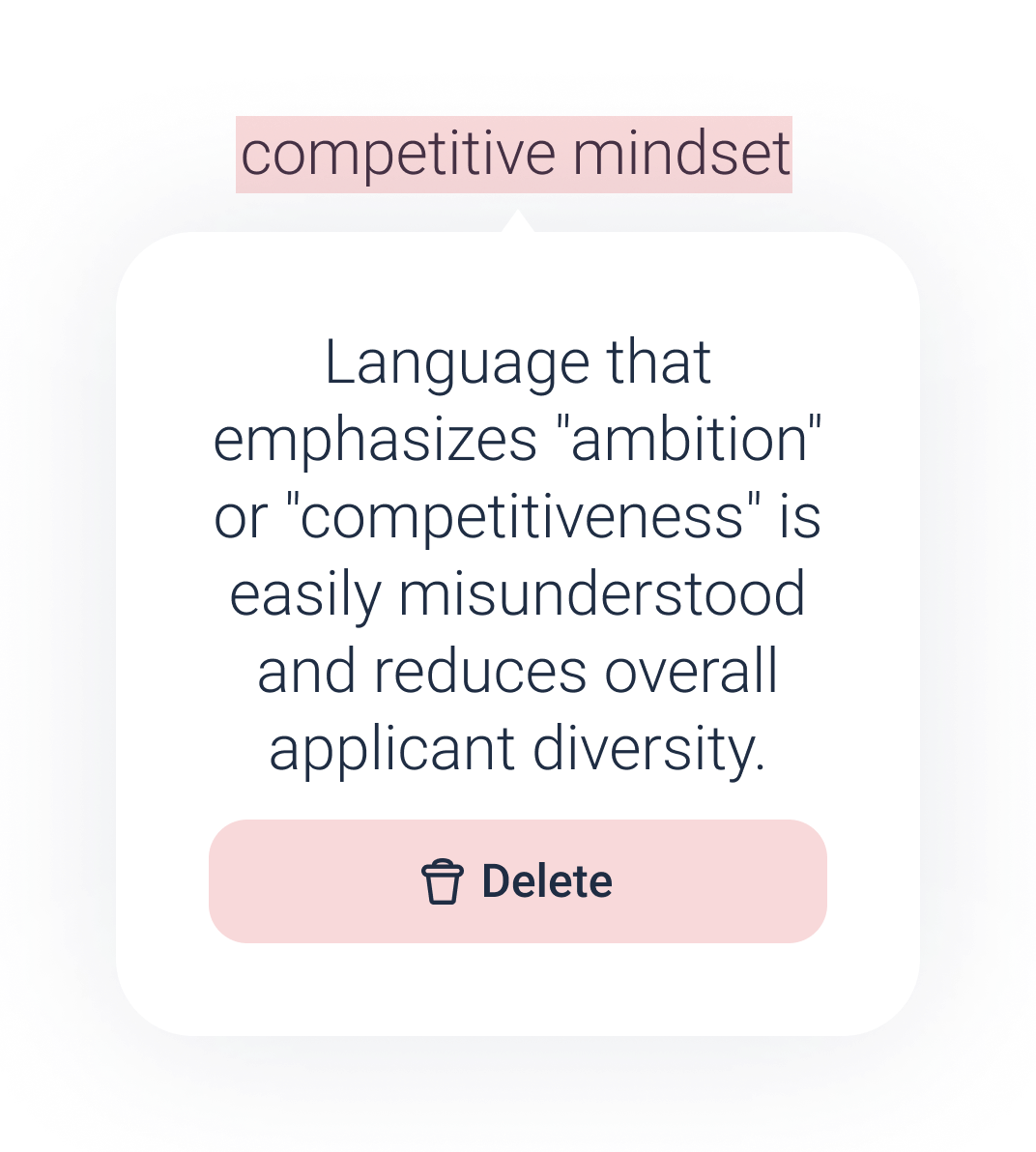
Red = Remove content
Some content simply doesn’t belong in a job posting. This is the language that we already know gets in the way of attracting high-quality, diverse candidate pools. The red highlights in our language analytics platform call attention to critical errors and soft skills that may hinder your hiring effort.
They include phrases such as ‘you work harder than anyone else on the planet,’ which could be off-putting to anyone, really. And also soft skills that mean different things to different people such as ‘excellent communication skills’ or ‘ability to prioritize.’ You can assess soft skills in other parts of the hiring process, such as interviews. Including them on the job post just wastes valuable space.
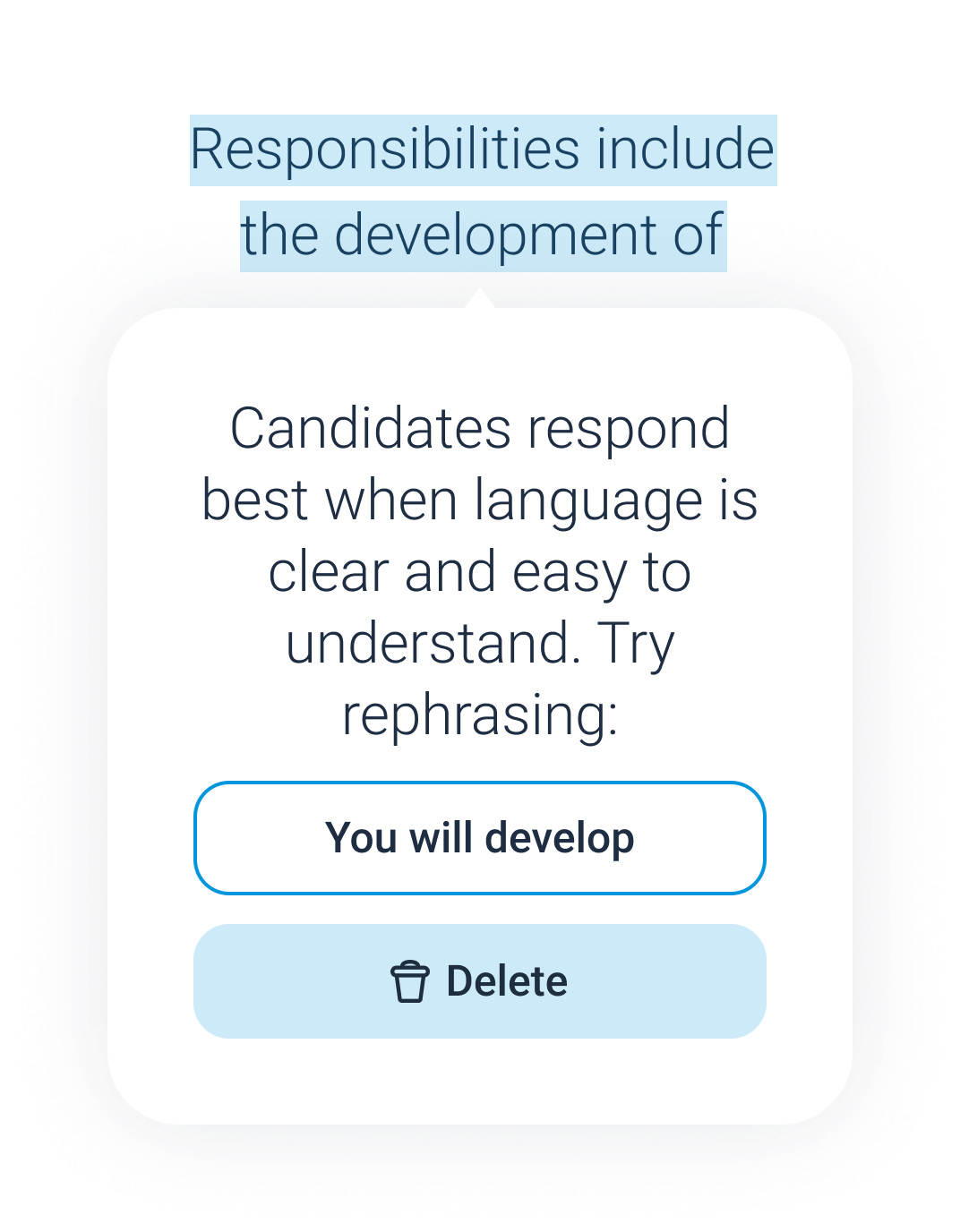
Blue = Improve content
We all know that there are different ways of saying things. Some people prefer an informal writing style to a formal one and vice versa. But if the words or phrases you choose get in the way of clarity, that’s a problem.
Our blue highlights point out troublesome language that doesn’t rise to the level of a red highlight (delete, delete, delete) but could be clearer. This includes sentences that ramble on, phrasing that seems impersonal, and word choice that sounds like corporate-speak or jargon. For example, a sentence that’s 40 words long, addresses the reader as ‘the candidate’ instead of ‘you,’ and includes gems like ‘utilize’ and ‘synergize’ may get a blue highlight or two.
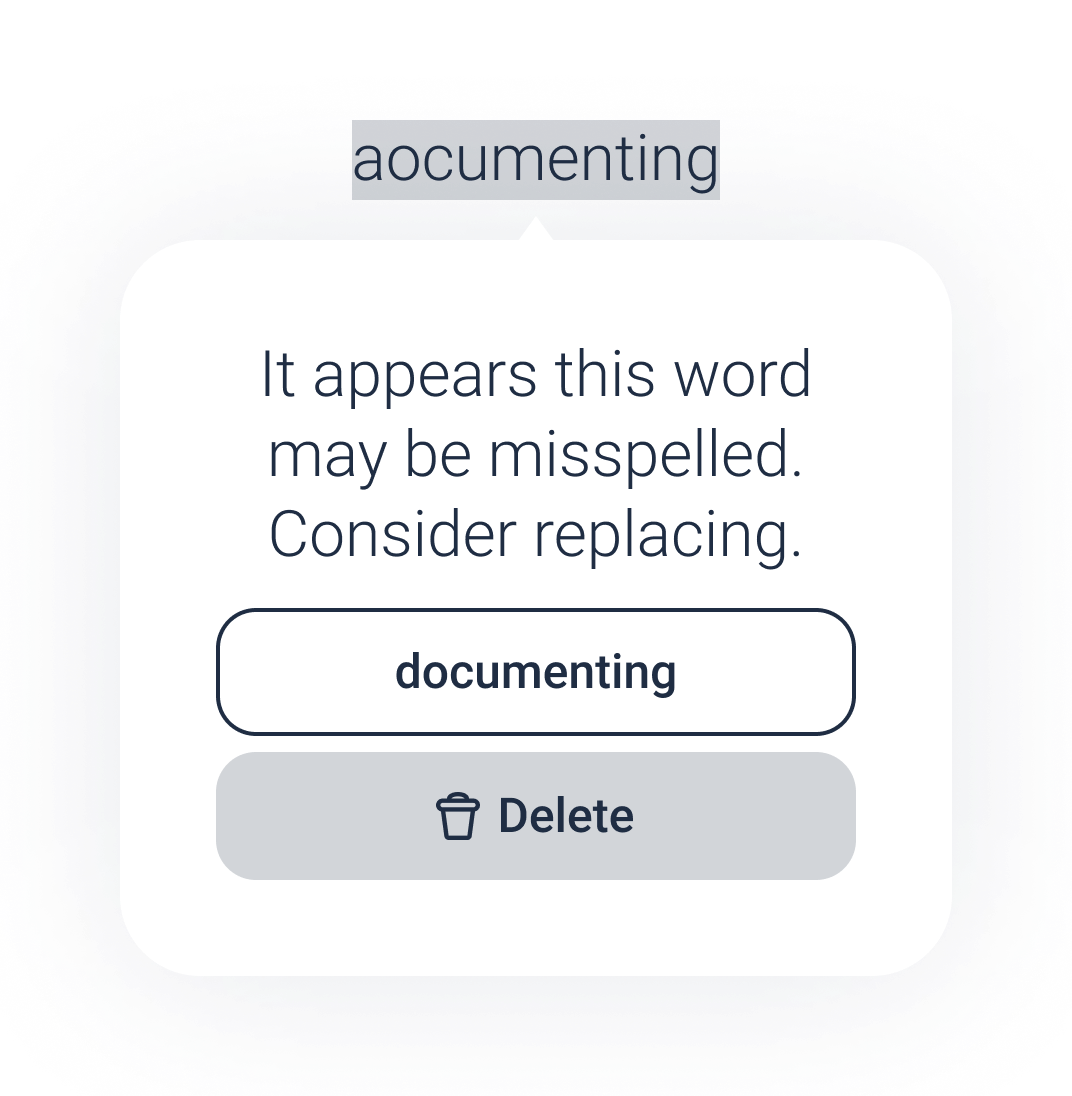
Gray = Fix language mechanics
Everyone makes little mistakes during the writing process. Even professional writers need grammar and spell checks.
The gray highlights in our language analytics platform address language mechanics such as the common grammar and spelling mistakes that we all make from time to time.
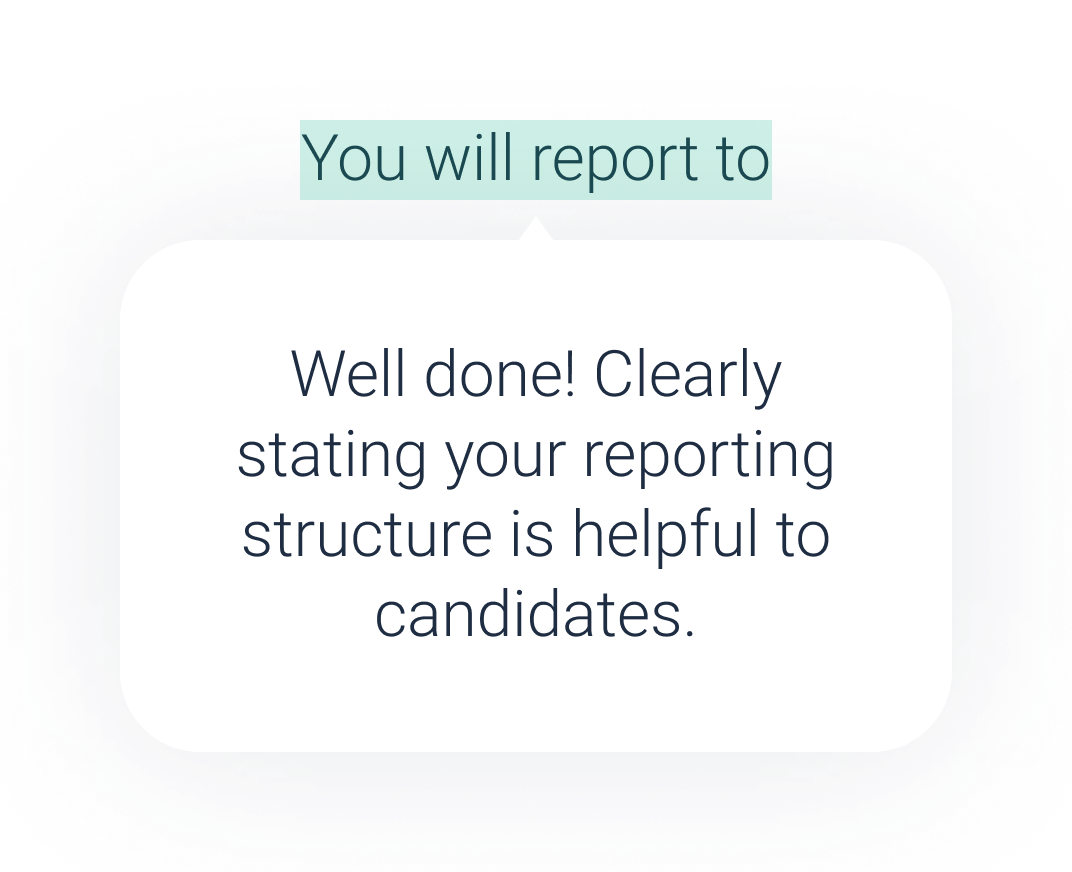
Green = Kudos
As you’ve noticed, Datapeople’s language analytics platform offers more stick than carrot in the form of corrective advice to hiring teams. But there’s some carrot in there too.
Our green highlights show users when they’re writing with language that appeals to everyone. Through positive reinforcement (carrots), hiring teams learn over time what language to use and what language not to use.
Try or demo our language analytics platform
Want to see for yourself how easy it is to write job descriptions that attract more qualified and diverse candidate pools? Schedule a demo to have someone from our team give you a tour.
And if you’re wondering how to implement a new platform into your recruiting process, change management article for you. Change management isn’t easy, so we’ve outlined five steps that make the transition shorter and easier.
